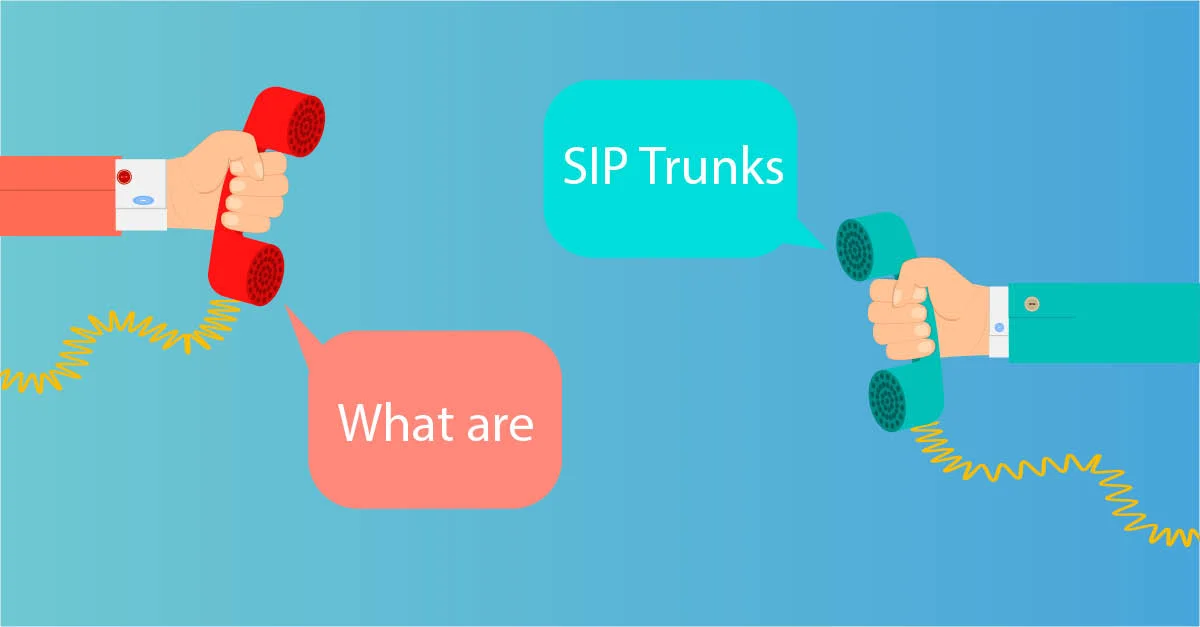
The Mechanism and Importance of SIP Trunking in a Business
- August 19, 2021
SIP trunking is the primary skeleton that works behind a PBX telephony system. When you plan to shift your business communication from the traditional PSTN system to a VoIP based system, you will need to get SIP trunking for your network. In a modernized market, most companies are spending more and more on digitizing their functions. SIP services stand extremely beneficial in such a market space. Digitization not only saves time and money but also eliminates the chances of human errors. Thus your organization can offer an extremely flexible and unrestrained work environment to its employees. Communication is the key factor for expanding and excelling for any enterprise. SIP trunking amalgamates digitization and communication perfectly to suit all kinds of businesses.
What is SIP Trunking And How Does It Work?
SIP stands for Session Initiation Protocol. It is a standard technology that is used to execute all multimedia communications over an internet connection or IP (Internet Protocol). With SIP trunking you can therefore enable Voice over IP. Voice over IP (VoIP) is the process that enables you to make and receive calls over an internet connection. VoIP works under the protocol technology of SIP in most cases.
SIP has successfully replaced the PSTN system of voice call transfer. PSTN calls used to get transferred via copper wires. This system was extremely complicated. However, with SIP you have to create trunks that would help transmit your voice data through Internet Protocol(IP).
The term “trunk” in general refers to vertical spaces holding something. In the case of PSTN, the trunks hold the copper wires that transmit voice class. However, when we use the term SIP trunk, it suggests a virtual space that holds within it a particular bandwidth intensity. This bandwidth converts the voice data into digital packets which are transmitted from one end to the other with the help of the internet.
SIP trunk providers either borrow these trunks from bigger companies or create their own trunks. Through these trunks, they create the telephonic lines that help us communicate and convey voice messages.
The Advantages of SIP Trunking
SIP trunking has several benefits. This claim can be proved by the rising demand for SIP trunking providers in the telephonic market. The most advantageous landmark created by SIP trunking in the history of telephony is the replacement of PSTN connections. This eliminates the per-minute and allied charges of using a traditional telephone. It is through SIP trunking that now organizations, as well as individuals, can make calls by paying only for their internet connection.it not only cuts the cost but also allows multimedia communication to thrive in the modern communication business.
With the help of SIP, we can reduce the charges of toll-free and international calling. When you make calls through the internet, they become non-chargeable. Internet is a fixed charge for all organizations and individuals in today’s time. No matter what you will always need an internet connection. Hence, when you can use this internet connection to carry out your organizational affairs as well as calling, it serves as a huge boon.
Organizational Benefits of Using SIP
The following advantages serve business organizations the most when SIP trunking is implemented:
- It helps them to cut the cost to a huge extent with zero calling cost and almost negligible international calls cost. It also eliminates installation and maintenance costs for organizations.
- Optimized use of internet connection is a great reason why several enterprises are planning to shift their networks from PSTN to SIP.
- Multimedia communications are one great aspect of why organizations need to prefer SIP over traditional networks.
- SIP trunking provides cloud services. With cloud services, you can get many added benefits. When VoIP software is used to make calls through SIP, one can have a complete database of all their calls recorded and saved for the future. It also allows remotes working options for employees.
- SIP trunking makes management and monitoring an easy task for organizations that can not be done with a traditional PSTN network.
SIP trunking in short can be regarded as the future of the telephony industry. With rising digitization, many organizations have already shifted to this networking technique and many more are planning to make this shift in the future.